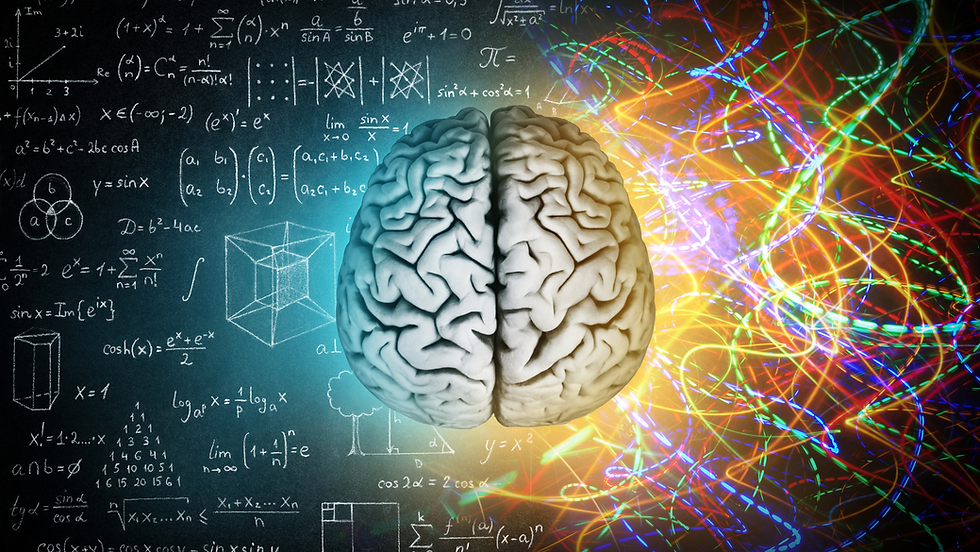Understanding how the human brain works has long fascinated society: Greek philosopher Aristotle thought the brain was “simply a radiator” that staved off overheating from the heart, but by 170 AD, a Roman physician and eminent authority in neuroscience (Galen) had suggested that the brain’s four ventricles were the seat of complex thought and cognition.
Neuroscience seeks to uncover the biological mechanisms of the nervous system whilst psychology focuses more on human behaviour and mental processes. A popular myth touching upon both fields of study suggests that people can either be ‘left-brained’ or ‘right-brained’ - otherwise known as brain lateralisation. But is this methodological, or myth?
In today’s blog, we’ll explore whether there’s any truth to this convention and what its perpetuation may really have to say about what we know of our personality and cognitive abilities.

‘Brain Lateralisation’: Defined
The left and right sides of the brain are joined together by the corpus callosum: a bundle of nerve fibres in the middle of the brain. The concept of brain lateralisation suggests that these two hemispheres of the brain are responsible for different physical and mental functions, and the dominance of either side will inform a person’s strengths and overall characteristics.
This theory purports that, for example, people are either more inclined to analytical or logical thinking (left-brained), as opposed to more creative and intuitive thinking (right-brained), depending on which side of the brain is more dominant. If you like art and music, but struggle with maths, this implies that the left side of your brain is the size of a peanut compared to that of your right side, and so on. But can this really be the case?
This dichotomy was popularised by Betty Edward’s 1979 book, Drawing on the Right Side of the Brain, claiming that accessing one’s right-brain could enhance artistic perception (and was also how she supported her claim in being able to teach anyone to draw in five days)!.
The True Biology of the Brain
Concentrate on simultaneous equations and quadratic equations by completing the square and using the formula when you come to practise with past paper questions. Forming equations from word problems or rearranging formulas will also increase mastery. It’s important to remember that all quadratic equations can be written in the standard form of ax2 + bx + c = 0 as this handy BBC guide details.
3) Ratio, Proportion
Contrary to Edward’s assertions and indeed other psychologists like Roger Sperry, research has shown that while certain brain functions are localised in specific regions, there’s very little evidence to suggest personality traits like creativity or a gift with numbers are housed in one hemisphere of the brain.
For example, it is certainly correct to say that the brain’s two hemispheres are specialised for different functions: the right-side does in fact govern spatial processing whilst the left-side is responsible for language. After all, Broca’s area and Wernicke’s area are usually found on the left-side and their impairment can lead to speech difficulties.
However, the limbic system (which includes the amygdalae and hippocampi) resides on both sides of the brain and is responsible for core functions such as emotion and memory. According to the Dana Foundation of Neuroscience, it’s important to remember that the hemispheres are not truly separate: communication between the two sides is enabled by commissural fibers where neural messages are constantly relayed. Who can then, therefore, paint a good picture or solve a tricky Maths problem without both sides of the brain working together?
False Equivalence: Focusing on the Truth
False equivalences are simple logical fallacies to fall into: after all, if a cat and a dog are both mammals and have a furry tail, they should therefore be considered the same animal (at least to an alien). However, this line of thinking ignores differences in orders of magnitude between a cat and a dog.
Similarly, just because certain functions may be more dominant in one hemisphere, this doesn’t mean that each hemisphere operates completely independently. An article published by Harvard references a 2013 University of Utah study which analysed brain activity in over 1000 people. Researchers found no significant differences in hemispheric dominance on personality. Brain imaging completed by other studies have also highlighted that creative thought activates a widespread network, favouring neither hemisphere.
Misinterpretation of scientific findings which detail the roles of different parts of the brain has falsely led to associations between specific brain functions and personality types.

Why is this Myth so Popular?
Much like horoscopes or other personality tests, it’s fun to be able to place what we know about the world (and the people in it!) into neat and predictable boxes. Humans have an innate desire to want to learn about ourselves and others around them; to feel that we belong to a larger group; and to sort information about our environment easily and quickly through categorisation.
But humans are more complex than that.
Certainly, deciding whether you are more or less ‘right-brained’ or ‘left-brained’ may be a useful tool for people who are trying to navigate their own journey of self-exploration and career pathways: Who are you? What do you identify with? Why are you the way that you are?
However, as with false equivalence, people could easily make a false assumption about someone purely based on what is perceived to be the attributes of a right- or left-brain thinker, leading to prejudice and confirmation bias. This myth also ignores how our experiences in life are endlessly shaping how we interact with the world, and how each individual is unique and constantly changing.
We should embrace the full spectrum of our experiences and abilities, and recognise that we are shaped by much more than a simplistic dichotomy.

Blog Post Crafted by Cheryl
Cheryl manages our Admin Team, and is a qualified teacher with 5 years' experience in schools across England and Canada.
Cheryl graduated from University of Toronto with a Bachelor of Education. She tutored secondary school students in English for over nine years in Canada.
Cheryl speaks Cantonese, English and French, and in her spare time, she can be found illustrating and reading children’s books for inspiration.

Comments